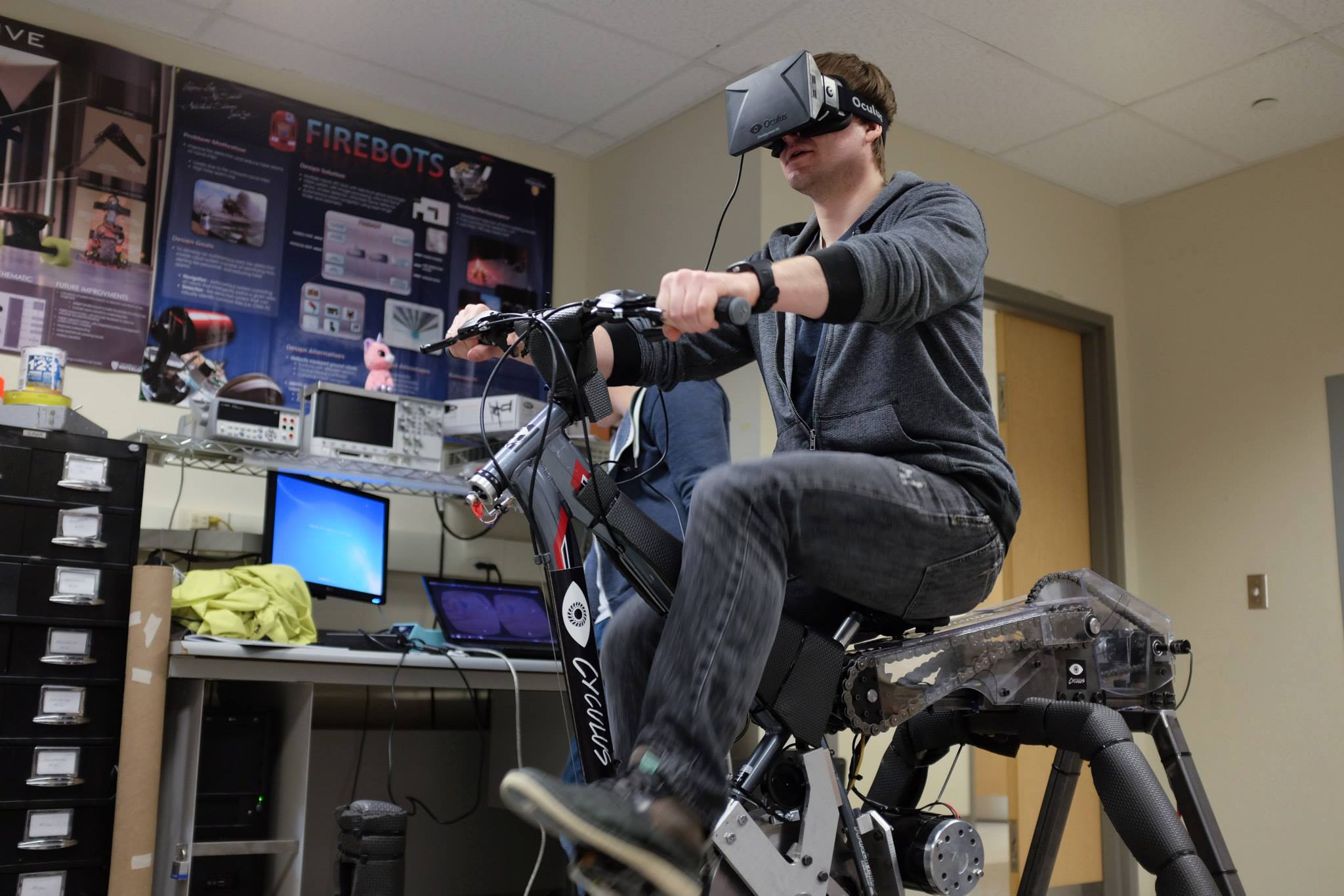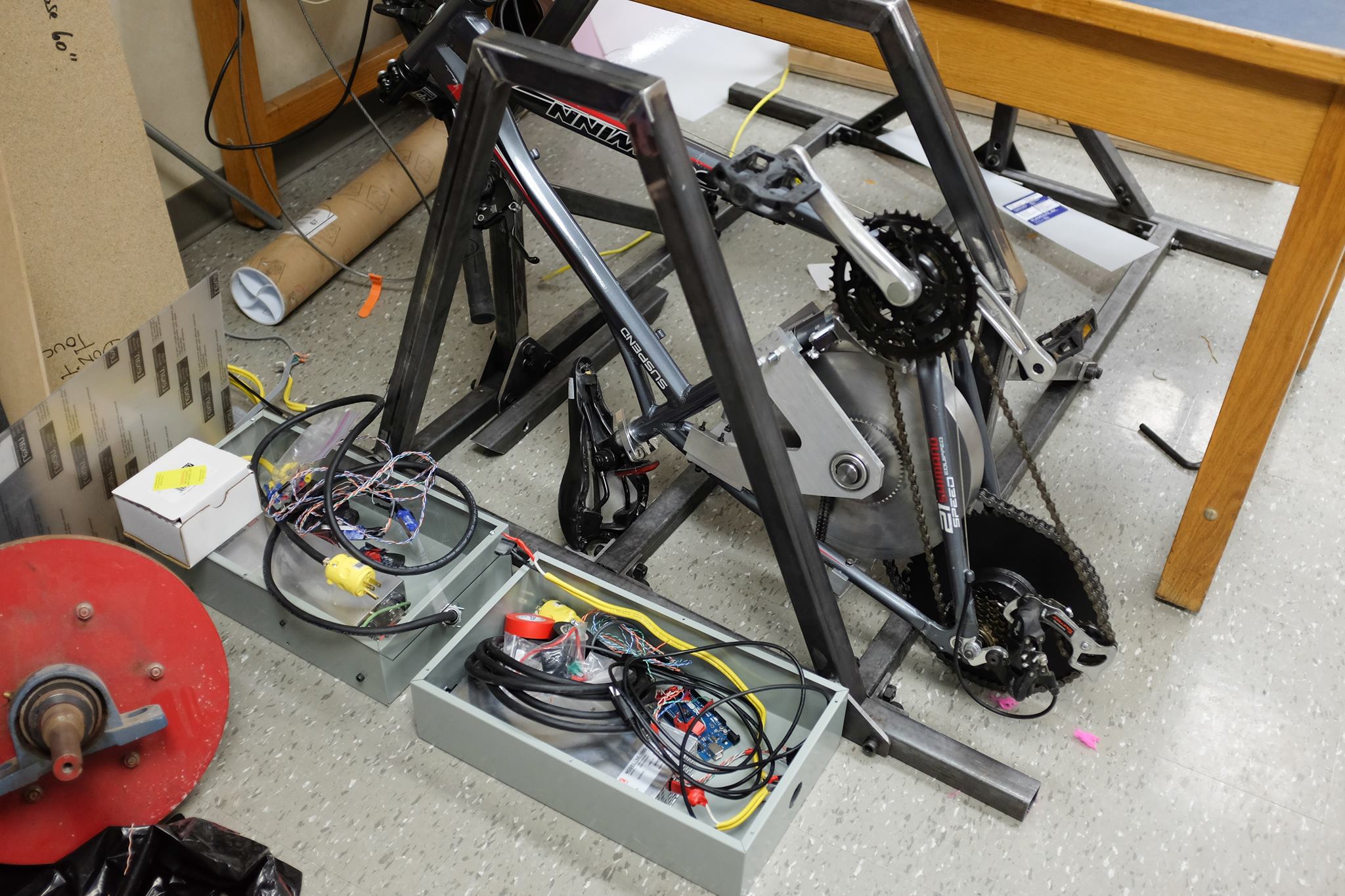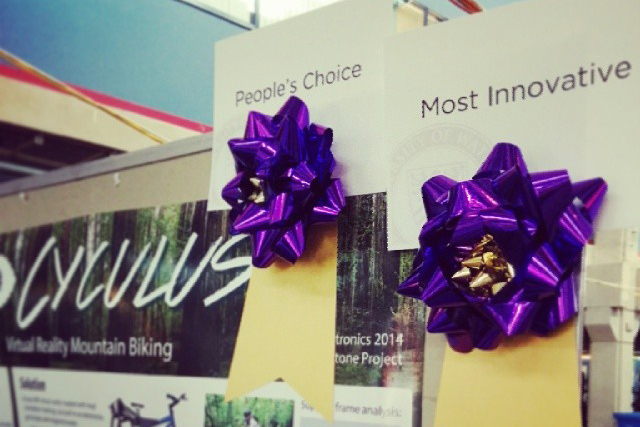System Design
Our mechanical rig has been designed to be sturdy and handle all the needed loads. Made with machined steel, the base has the necessary truss support to bear the load of the bike and heavy person.
The pivot system provides the major haptic feedback required for the project to provide a unique, exciting experience. We employ a PID control scheme to ensure we are following the angles set by our physics engine.
The pedal resistance system helps make our system feel realistic to the user. By giving us the ability to increase or decrease the resistance provided to the user for pedalling. We have also included a flywheel geared and chained to simulate the inertia associated with starting and rolling with a bike.














